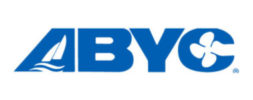U.S. FWS promotes public recreational access in expansion

Continuing the Department of the Interior’s efforts to increase recreational access on public lands, the U.S. Fish and Wildlife Service recently announced a proposal for new or expanded hunting and sport fishing opportunities for game species across 2.1 million acres at 90 national wildlife refuges and on the lands of one national fish hatchery.
“We are committed to ensuring Americans of all backgrounds have access to hunting and fishing and other recreational activities on our public lands,” said service principal deputy director Martha Williams. “Hunters and anglers are some of our most ardent conservationists and they play an important role in ensuring the future of diverse and healthy wildlife populations. Our lands have also provided a much-needed outlet to thousands during the pandemic and we hope these additional opportunities will provide a further connection with nature, recreation and enjoyment.”
Increasing access to public lands and waters is a central component of the Biden-Harris administration’s approach to conservation, including the efforts to conserve 30% of U.S lands and waters by 2030. This proposed rule would open or expand 939 opportunities for hunting or sport fishing (an opportunity is one species on one field station). The expansion proposed in this rule is the largest in recent history – including last year’s proposed rule which itself was larger than the previous five rules combined.
These proposed changes include five refuges in the Pacific Northwest. They are:
- Camas National Wildlife Refuge in Idaho: Camas National Wildlife Refuge in Idaho: Open 8,111 acres to elk hunting, including 5,521 acres being opened to hunting for the first time. Expand hunting to allow dove hunting on 2,590 acres that are currently open to migratory and upland game bird hunting.
- Kootenai National Wildlife Refuge in Idaho: Expand existing sport fishing by allowing night fishing access to Deep Creek for burbot.
- Malheur National Wildlife Refuge in Oregon: Expand hunting on 40,870 acres that are currently open to hunting by extending hunting seasons for migratory and upland game birds on the Buena Vista and South Malheur Lake Units to align with state seasons. It would also open the 36,218-acre Buena Vista Unit to mule deer hunting.
- William L. Finley National Wildlife Refuge in Oregon: Open a portion the Snag Boat Bend Unit of the refuge to waterfowl hunting for the first time, and to expand existing black-tailed deer hunting on the refuge to include the Snag Boat Bend Unit.
- Julia Butler Hanson Refuge for the Columbian White-Tailed Deer in Oregon and Washington: Expand the refuge’s existing waterfowl hunting to include the shoreline of the Westport Unit in Oregon.
- Hunting, fishing and other outdoor activities contributed more than $156 billion in economic activity in communities across the United States in 2016, according to the Service’s National Survey of Fishing, Hunting and Wildlife-Associated Recreation, published every five years. More than 101 million Americans — 40 percent of the U.S. population age 16 and older — pursue wildlife-related recreation, including hunting and fishing.
The action proposes to bring the number of units in the Service’s National Wildlife Refuge System where the public may hunt to 434 and the number where fishing will be permitted to 378. The rule also proposes to formally bring the total number of National Fish Hatchery System units open to hunting or sport fishing to 22.
New proposed refuge opportunities include opening big game hunting (turkey) and sport fishing at Florida Panther National Wildlife Refuge in Florida for the first time; opening Muleshoe and Neches River National Wildlife Refuges in Texas to migratory game bird, upland game and big game hunting for the first time; and opening Featherstone National Wildlife Refuge in Virginia for the first time to migratory game bird hunting and sport fishing.
A change at hatcheries includes the proposed formal opening of lands to sport fishing at Green Lake National Fish Hatchery in Maine for the first time.
The proposed rule also continues the effort from previous rules toward revising refuge hunting and fishing regulations so that they more closely match state regulations where the refuge is located. This year’s rule also proposes revisions that ensure whenever refuge regulations depart from state regulations, for safety or conservation compatibility reasons, these extra regulations are consistent across all refuges in the given state. The Service worked closely with the states in preparing the proposed rule.
The Service will seek comments from the public on the proposed rule for 60 days, beginning with publication in the Federal Register on May 4, 2021. The notice is available at http://www.regulations.gov, Docket Number: FWS-HQ-NWRS-2021-0027, and includes details on how to submit your comments.
The Service intends to finalize the proposed changes in time for the upcoming 2021-2022 hunting seasons. A complete list of all refuges and hatcheries in the proposal is available in the proposed rule. View an online list.




